Our Compression Brands
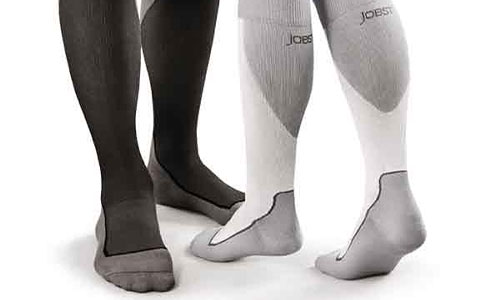
Jobst
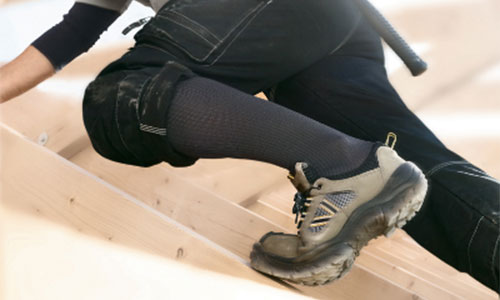
Medi
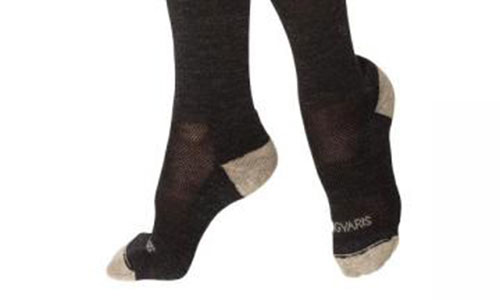
Sigvaris
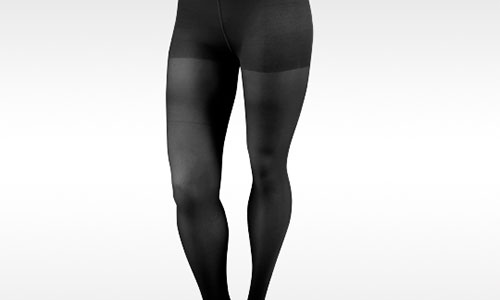
Juzo
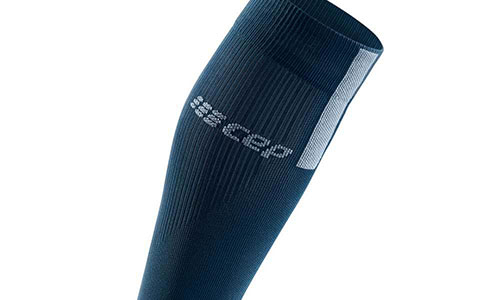
CEP
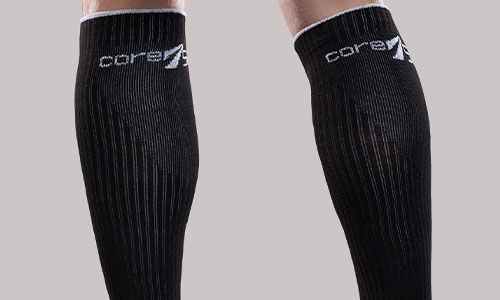
Therafirm
Browse All Compression Garments
Your Legs Shouldn’t Feel Tired All the Time
And You Don’t Have to Accept Ugly Varicose / Spider Veins – You Can Do Something About It
What You’ll Know by the End of This Report:
- Why Compression Socks Could Benefit You
- Who Should Not Use Compression Socks
- Insurance and Compression Socks – Helpful Information
- Tips for Getting the Most Benefit from Compression Socks
“When I wear the stockings, they improve the way my legs feel!"
Who Can Benefit from the Use of Compression Socks?
- People with legs that feel fatigued too often. Compression legwear can also help combat leg swelling. As the pace of life keeps gathering steam, many men and women find that the freshness they need to keep up with their lives is not there when they need it. Compression socks are a good answer for people who don’t want to accept fatigue or swelling as something they “just have to live with.”
- People who want to relieve symptoms and slow the progress of varicose veins. The use of compression legwear is a proven method for combating varicose veins and other venous disorders. Here is a shocking statistic: It is estimated that more than 80 million Americans suffer from some form of venous disorder. And statistics also show that while 1/3 of Americans over age 45 suffer from vein disease, only 4% are being treated! It is time to close that shameful gap and take vein-related diseases seriously.
- People who sit at desks all day as part of their jobs. The legs are the farthest in your body from the heart. This means that when a person’s activity level is lower, the legs are what suffer the most fatigue and potential medical problems. Please note that standing all day in the same position can lead to similar fatigue and swelling. Sometimes due to job conditions and other factors outside your control, you can’t be as active as you like. Compression socks are a way to re-assert control over how your legs feel.
- People who travel a lot. Not only can compression socks keep travelers' legs fresher, but they also guard against a serious medical condition that in some rare cases is fatal - Deep Vein Thrombosis or more commonly known as DVT.
- Pregnant women. Not only can compression socks keep aching legs at bay, but it also can prevent those ugly vein issues.
- People who have a medical condition that can be improved by compression stockings. If you have leg problems, particularly involving fatigue or related to veins, ask your doctor if compression socks are part of the solution.
If any of the above sounds like you, take the first step and contact us.
“I wish someone had told me how wonderful compression socks would feel. I am 17 weeks along with twins. Even though I am not yet experiencing a lot of swelling in my feet and legs, the compression trouser socks with a diamond pattern on them are wonderful.“
"I am a flight attendant and I find that the compression stockings reduce the swelling and aching that I would usually feel in my legs & feet as a result of flying."
Who Should Not Use Compression Socks
If you have any of the following medical conditions, compression legwear should NOT be used. These include:
- Advanced arterial disease
- Uncontrolled congestive heart failure
- Untreated septic phlebitis
- And phlegmasia cerulea dolens.
Bottom line: If you have arterial circulation problems, you should always check with your doctor before using compression legwear.
Insurance and Compression Socks
Many insurance plans will cover compression socks and legwear under certain conditions.
Here is the step-by-step process of finding out your particular situation:
- Contact your insurance company and inquire about their policy for compression items. They will tell you if they are covered and how many you may get. Ask about their requirements for getting coverage. Be sure to ask about any deductibles and/or co-pays.
- Next, contact your doctor. Any insurance reimbursement claim must have a valid, qualified prescription signed by your physician.
- Once you have all this information, come see us for your free consultation. We have enough experience to help you determine your options.
Note: Medicare Plan B will not cover compression stockings in most cases, but your Medicare Secondary plan may.
Four Tips for Getting the Most Benefit from Compression Socks or Other Compression Related Wear.
Compression Garment Tip #1:
Wear your compression socks every day. If you are serious about feeling better and battling varicose veins, it is important to use compression therapy every day.
Compression Garment Tip #2:
Put your compression socks on as soon as possible in the morning. This makes them easier to get on and you’ll quickly adjust and find them comfortable to wear all day.
Compression Garment Tip #3:
Keep your legs and feet warm. This helps promote good circulation.
Compression Garment Tip #4:
If you are stuck in a relatively immobile situation at work or travel situation, get up and move for at least 5 minutes every hour.
Compression Garment FAQs
What length of compression stockings do I need?
Compression is effective when it covers the area where the problem is. If your problem area is anywhere from your feet to just above the calf, then knee-length stockings would likely be sufficient. If your problems continue above the knee, then thigh-length or even waist length may be more appropriate.
What compression level do I need?
The pressure provided by compression stockings is measured in millimeters of mercury (mmHg). Compression stockings utilized graduated compression. The compression is at its maximum at the ankle and gradually lessens towards the top of the stocking. Hence your options are 8-15mmHG, 15-20mmhg, 20-30mmHG, 30-40mmHG, and so forth. Typically your physician will tell you what compression level you need. Wear 30-40mmHg, or greater, only under your physician’s supervision.
What is my compression stocking size?
There are some over-the-counter grade stockings that are sized by shoe size, however, most medical-grade stockings are sized based on measurements at precise landmarks on your leg. It is most beneficial to take these measurements first thing in the morning when swelling is at its lowest.
What is the recommended compression for traveling?
Assuming you have no pre-existing conditions that would necessitate wearing compression stockings routinely, a 15-20mmHg stocking would be recommended.
Will my health insurance plan pay for my compression stockings?
Many insurance plans DO pay for compression stockings. If you are not sure, call your insurance company’s member services and ask about your plan’s coverage for compression stockings.
Will Medicare pay for my compression stockings?
In most circumstances, Medicare will NOT cover compression stockings. They will, however, cover them if your condition includes active venous stasis ulcers. Good news for many of you who have secondary insurance, your plan may still pay for compression stockings even if Medicare will not!
What can you do to help me put my stockings on?
There are several tips and tricks to assist you in putting on compression stockings. We're here to help you. If necessary, we can show you some options using assistive devices that may help as well.
Can I put compression stockings in my washer and dryer?
Some can go in your washer and dryer, some only in your washer, and others must be hand-washed. Compression stockings are made with spandex. Hand washing and air-drying will help with the stocking's lifespan. We always recommend a mild detergent with warm or cold water only, never hot. Using a lingerie bag in the washer is ideal, especially if your stockings are sheer. Always wash after every wear. The dirt, dander, and oils from the skin will breakdown the spandex material. Washing returns the stocking to its original size and shape.
Are diabetic socks compression stockings?
No. Diabetic socks have either no or low compression. These socks will have an antimicrobial finish to help deter the growth of bacteria. Many have moisture-wicking fibers to help keep your skin dry. Diabetic socks are constructed with no seams or smooth seams that won’t irritate the skin.
What compression stocking brand is best?
All brands that we offer equally perform the way compression stockings should. However, brands may offer different fabric options and color choices. Just like other clothing, compared brand to brand, sizing varies. Many compression wearers will try several different brands to determine what works best for them.
Can I get compression stockings with zippers?
The answer is yes, but we do not recommend them. People think that a zipper will make it easier to put them on. Many major brands previously manufactured them. However, zippered stockings were not easier to put on, in fact, they were much more difficult. It always required a “third” hand or another person. You need two hands to hold the sides together, and a third hand to raise the zipper. There are much better options to assist in putting on your stockings if you are unable to do so. Velcro closures are a much better option.
| mmHg | Condition |
|---|---|
| 8-15 | Mild Aching Legs |
| 8-15 | Diabetes |
| 15-20 | Mild Aching Legs |
| 15-20 | Mild Edema |
| 15-20 | Pregnancy |
| 15-20 | Mild Swelling |
| 15-20 | Spider Veins |
| 15-20 | Mild Tired Legs |
| 15-20 | Mild Vericose Veins |
| 20-30 | Deep Vein Thrombosis (DVT) |
| 20-30 | Moderate Edema |
| 20-30 | Lymphedema |
| 20-30 | Orthostatic Hypertension |
| 20-30 | Post Surgery |
| 20-30 | Pregnancy |
| 20-30 | Moderate Swelling |
| 20-30 | Moderate Varicose Veins |
| 20-30 | Venous Insufficiency |
| 30-40 | Deep Vein Thrombosis (DVT) |
| 30-40 | Severe Edema |
| 30-40 | Lymphedema |
| 30-40 | Orthostatic Hypertension |
| 30-40 | Post Surgery |
| 30-40 | Severe Swelling |
| 30-40 | Severe Varicose Veins |
| 30-40 | Venous Statsis Ulcer |

